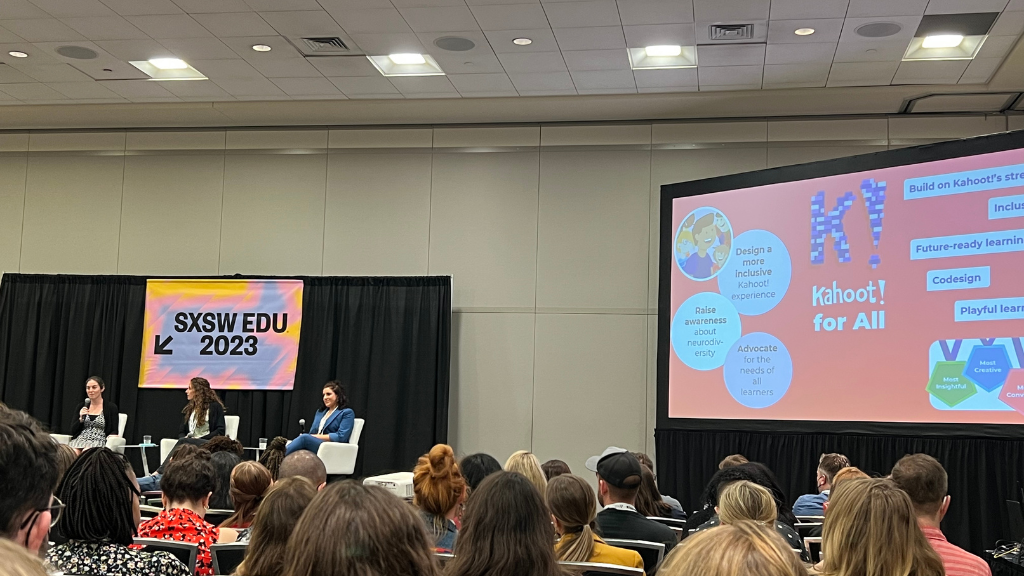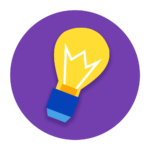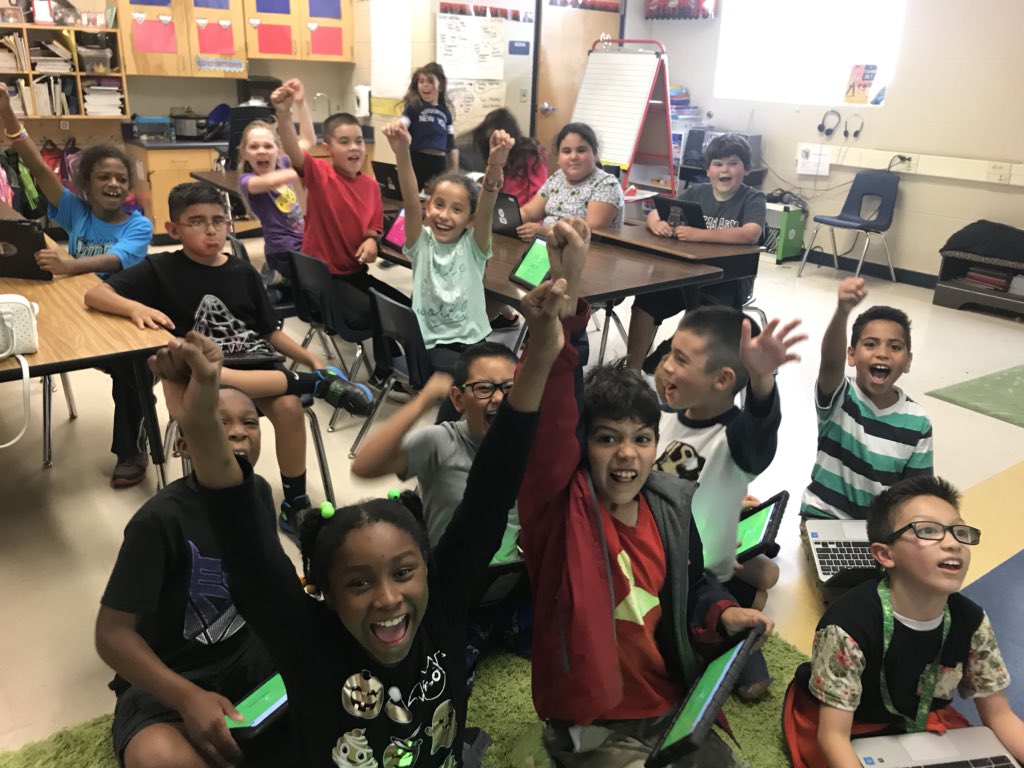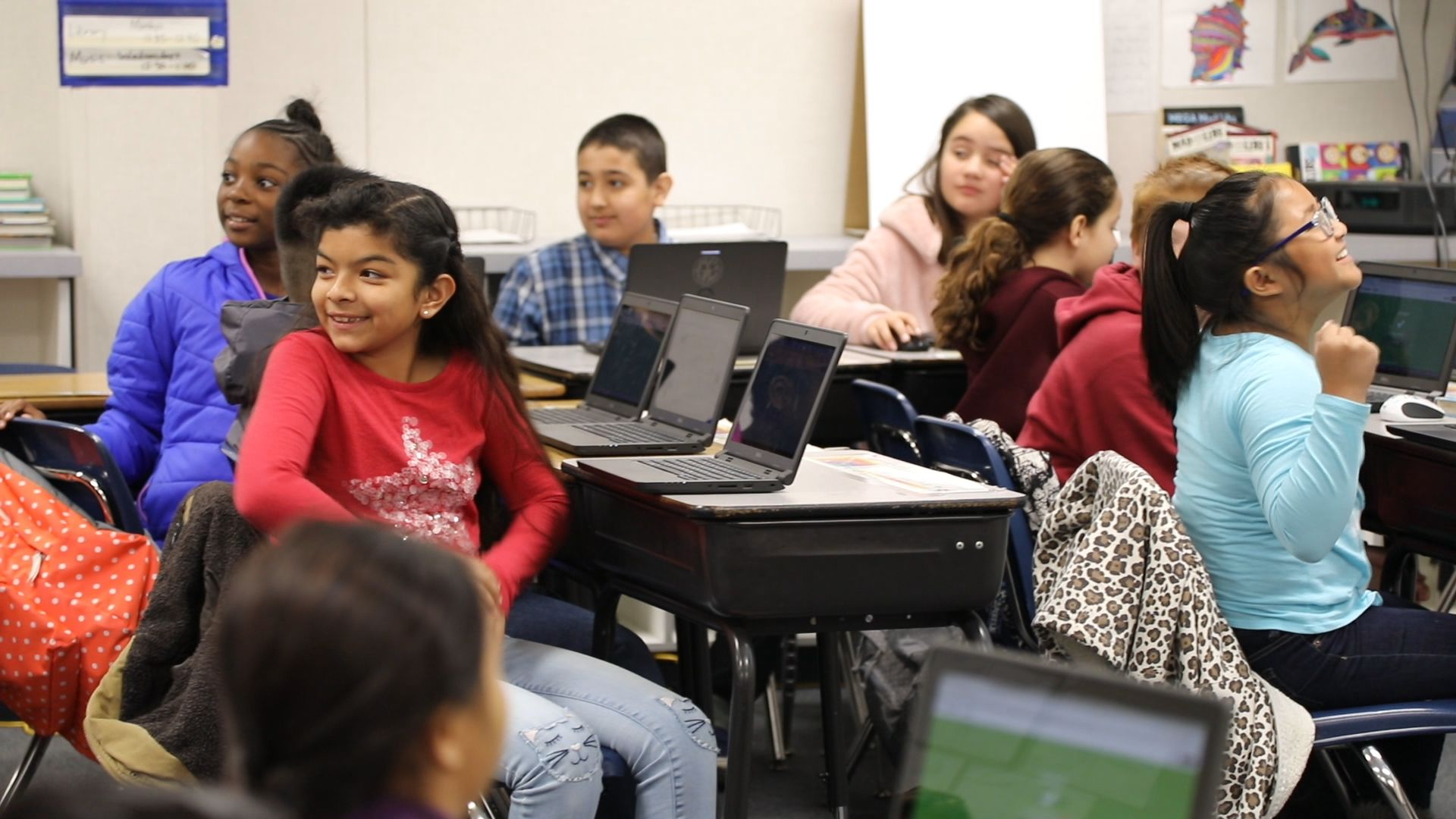Neurodiversity is the diversity found in human brains and cognition, including the many different ways in which people’s minds work. As educators, we need to make our teaching as inclusive as we can, so that people who think in all different ways can access learning. As developers of EdTech tools, we also need to pay attention to neurodiversity, designing software that can work for all kinds of minds.
We recently attended the SXSW EDU conference (where Kahoot! was initially launched in 2013!), and we were proud to be on a panel about this very topic: designing inclusive digital learning experiences, in particular ones that use a playful learning approach. As a member of the LEGO Foundation Play for All program, we joined with two other EdTech companies in the program, Mightier and Social Cipher, to speak about how we do this in our work, and how other designers and educators can prioritize inclusion as well. If you couldn’t join us for the panel, you can listen to the audio of our conversation here.

Choose how to demonstrate learning
Some of the work we are doing at Kahoot! to make our tools more inclusive for neurodivergent learners involves designing a new question type that will let students show their thinking in a variety of different ways. We are basing our design principles on the Universal Design for Learning framework, which presents guidelines for making learning accessible to all people. One of these principles is to provide multiple means of expression, or to give students options in how they express their understanding and their ideas. For example, participants will be able to not only choose from answer options or type an answer, but also drawing and audio recording, which we hope will let players choose for themselves how they communicate best. Similarly, UDL calls for multiple means of engagement, or providing different ways for learners to access the material. One way that we enable this already is with a variety of game modes teachers can choose from, from the classic quiz game to collaborative play as a class in Submarine Squad, to a timer-free relaxing mode with Chill Art.
 Teaching Tip: Similarly, in your lesson design, consider whether all students are expected to demonstrate their learning and complete their work in the same way. Might you open it up to more “right” answers and more ways of working? You can also offer options of complete assignments through writing, drawing, recording, building, etc. This can allow students to succeed in various ways, which helps all learners, not only neurodivergent learners.
Teaching Tip: Similarly, in your lesson design, consider whether all students are expected to demonstrate their learning and complete their work in the same way. Might you open it up to more “right” answers and more ways of working? You can also offer options of complete assignments through writing, drawing, recording, building, etc. This can allow students to succeed in various ways, which helps all learners, not only neurodivergent learners.

Practice social emotional skills through play
Our friends over at Mightier are developing a different kind of education technology, one that uses biofeedback games to support kids in their emotional regulation. The ability to interpret one’s emotional experiences and manage the physiological reactions that come with those is difficult for children’s still developing frontal lobe. Successful emotional regulation, however, is a key and core component in children’s ability to effectively and comfortably engage academically. Mightier turns emotional regulation practice into a game. Children wear a heart rate monitor while playing, and have to practice calming down in order to succeed at each level. Using this technique, kids are not only building emotional awareness and learning strategies for regulating emotions, they are practicing it and getting feedback in real time. The platform allows for personal, individualized learning specific to the player. This approach, like the Universal Design for Learning principles, supports neurodivergent youth, but is also beneficial for all students.
 Teaching Tip: Consider your students who may get overstimulated or overwhelmed easily. Build in time for mindfulness or breathing practices that all students can do together, or set up a quiet corner for kids to use when they need it.
Teaching Tip: Consider your students who may get overstimulated or overwhelmed easily. Build in time for mindfulness or breathing practices that all students can do together, or set up a quiet corner for kids to use when they need it.

Show diversity in the curriculum
Another learning game company that centers inclusion and neurodiversity is Social Cipher. Their role-playing game, Ava, puts players in the shoes of a neurodivergent character who has to make decisions and practice social emotional skills. Representation of neurodiversity is core to the design of this experience, letting neurodivergent students see themselves in a game and come to understand themselves better through playing. In a world that often feels like it’s not made for them, this type of representation can make a big difference for neurodivergent youth, and build empathy in neurotypical people.
 Teaching Tip: Make neurodivergent people visible in your curriculum and lessons. Choose book characters and historical figures that are neurodivergent, for example, and talk about different kinds of minds with your class. This will help neurodivergent students feel belonging, and help all students understand their peers and develop empathy.
Teaching Tip: Make neurodivergent people visible in your curriculum and lessons. Choose book characters and historical figures that are neurodivergent, for example, and talk about different kinds of minds with your class. This will help neurodivergent students feel belonging, and help all students understand their peers and develop empathy.
When we think about neurodiversity and designing learning experiences for all kinds of minds, we must look beyond individual diagnoses or behaviors, striving to provide as much flexibility and customizability as possible. Let your students decide how they learn best, and support them to figure that out together. Designing for inclusivity, whether in developing EdTech solutions or evolving our teaching practices, not only benefits neurodivergent students, but can improve learning for all students. We’re excited to show you what we’ve been working on at Kahoot! to support this goal, and we’d love to hear how you bring inclusivity to life in your classrooms too! Share your story with us on Twitter, Facebook, Instagram, LinkedIn and TikTok.




